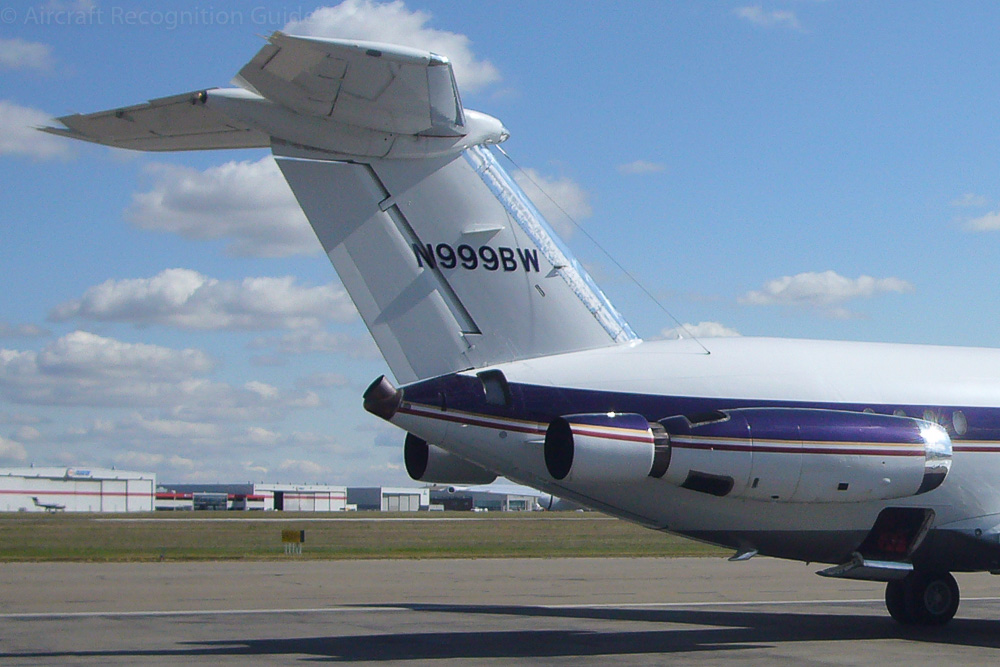
British Aircraft Corporation (BAC) One-Eleven
Like the French, Russians and the Americans the British developed a short to medium range jet transport in the 1960s. And like the competitors British Aircraft Corporation (BAC) chose a configuration with engines attached to the rear fuselage, with a T-tail. This BAC 111 is recognised by the lack of a dorsal fin, a short landing gear with the nose gear being placed relatively far from the nose, oval cabin windows and a small bullet fairing on top of the low vertical stabiliser. Also the last cockpit side window is typical, appearing nearly triangular.
Different versions
How to recognise the different versions of the BAC 111 will be added later.
Confusion possible with
Douglas DC-9
Especially the shorter versions of the DC-9 could be confused with the One Eleven. However, the DC-9 has eyebrow cockpit windows, rectangular cabin windows and small, curved dorsal fin.
Fokker F28, Fokker 70/100
The Fokker F28 and Fokker 70/100 are also of similar size and general configuration, and have oval cabin windows. The Fokkers have a large dorsal fin though, and a tail cone that can be split to act as an air brake.
Tupolev Tu-134
Tupolev 134s have four wheel main landing gears retracting rearward in pods extending from the trailing edge of the wings. If that is not enough look at the glass nose (on most versions), round cabin windows, dorsal fin and you are certain that this is no One Eleven.





